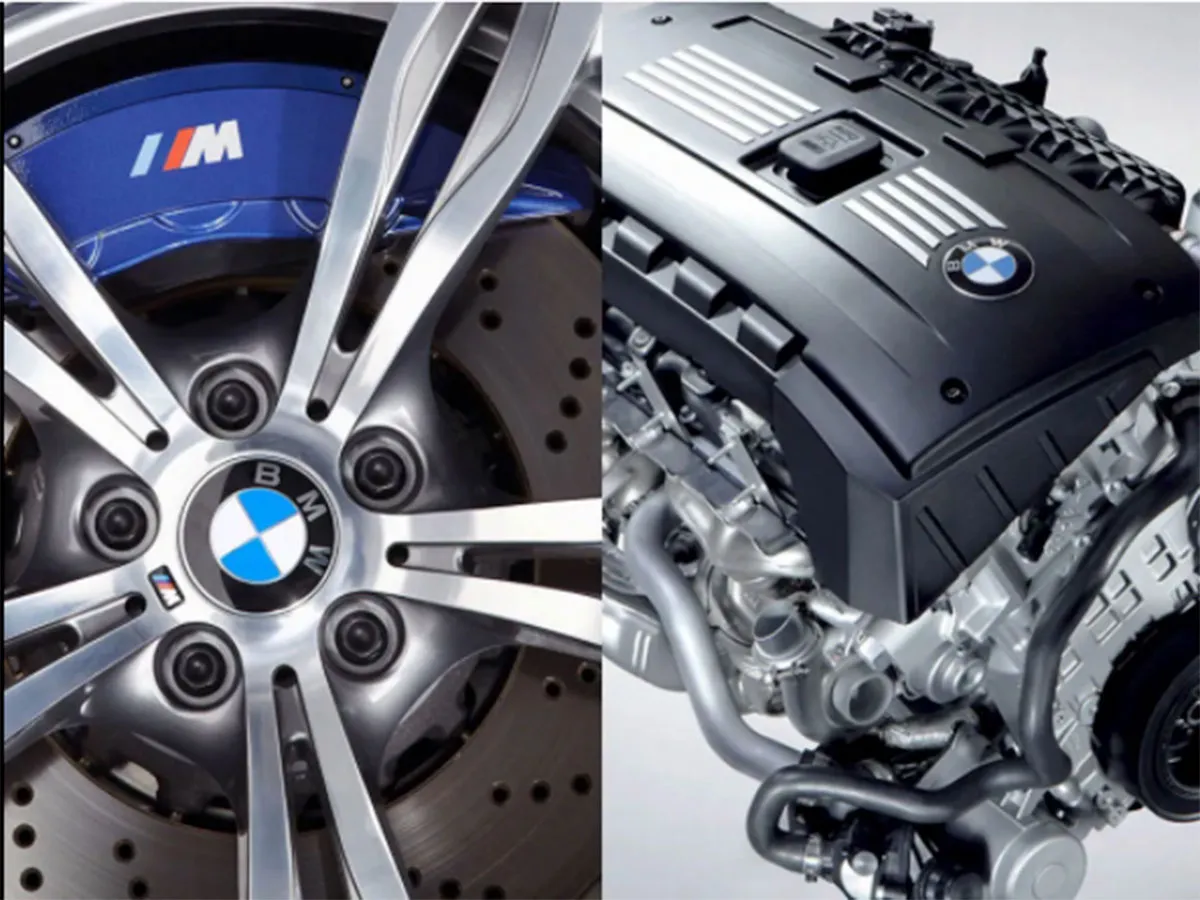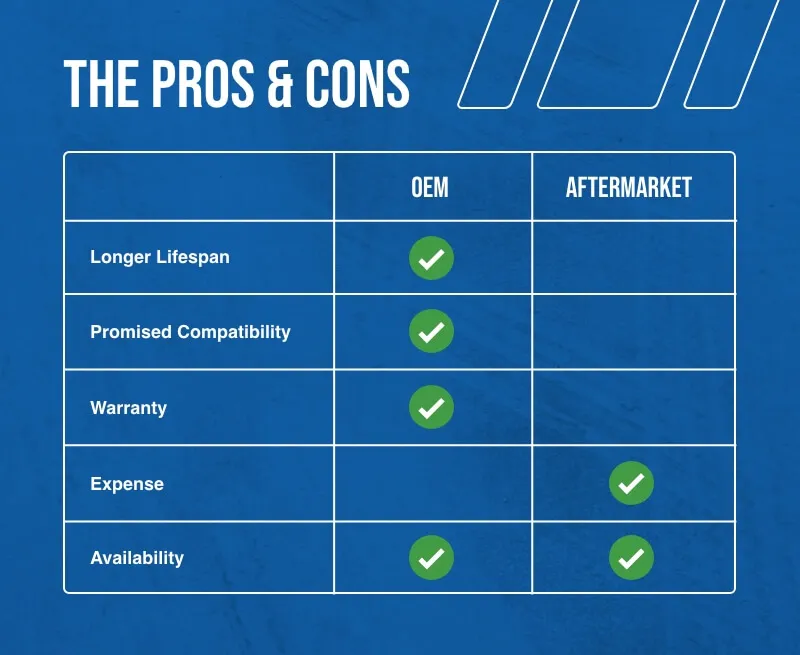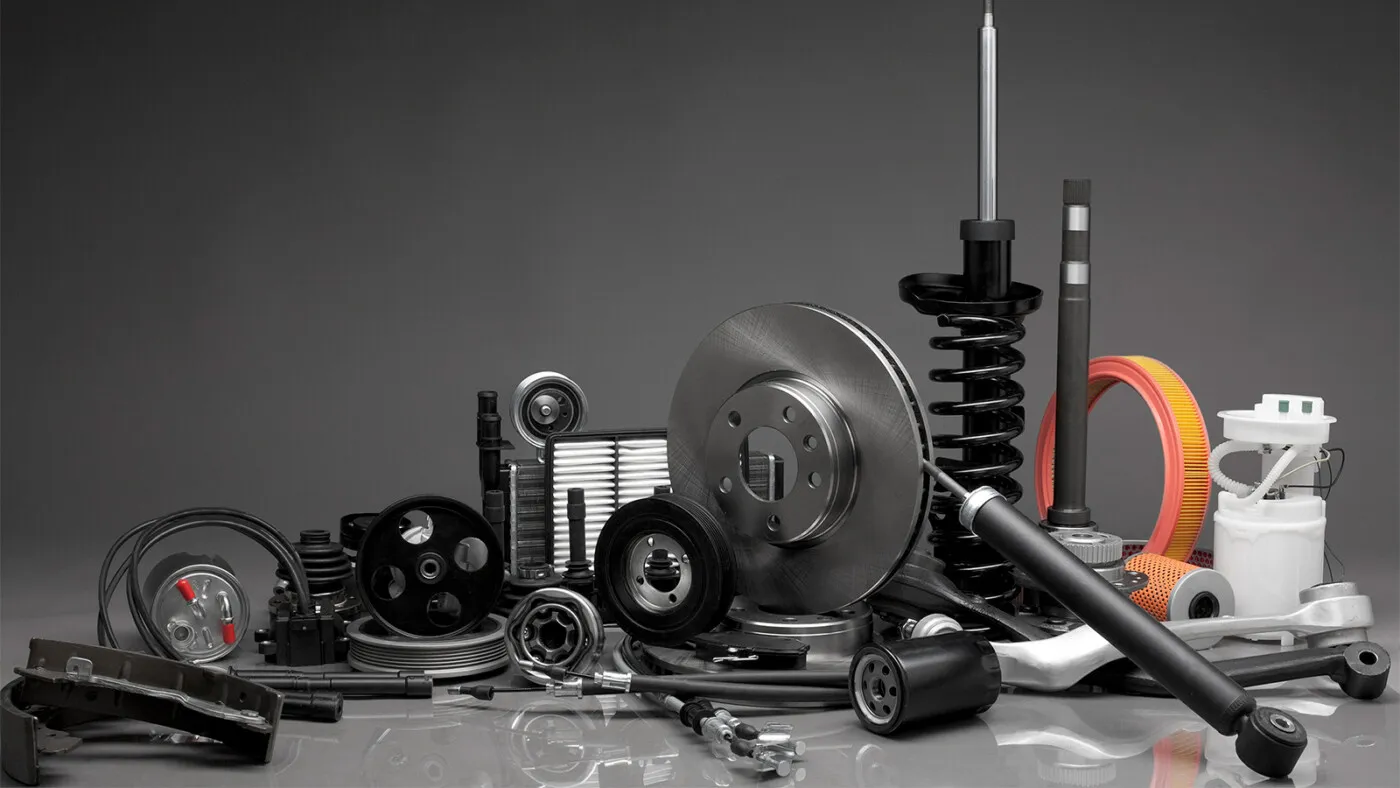In the intricate realm of luxury automobiles, the distinction between Original Equipment Manufacturer (OEM) parts and aftermarket alternatives emerges as a critical decision point for car owners. The choice transcends mere economics; it intertwines with the philosophies governing quality, safety, and performance, reflecting one’s investment in both the vehicle and its long-term upkeep. This comprehensive guide aims to illuminate the multifaceted dimensions of choosing between OEM and aftermarket parts, unpacking their implications for performance, cost, and vehicle integrity—all through the lens of luxury ownership.
Understanding the Landscape of Luxury Automotive Parts
OEM Parts: The Standard of Excellence
Original Equipment Manufacturer parts are components manufactured by the same entity responsible for producing the vehicle’s original parts. These parts are tailored specifically for each model, ensuring superior fit and function.
Characteristics of OEM Parts
- Quality Assurance: OEM parts are crafted to the specifications and rigorous standards established by the vehicle manufacturer, guaranteeing a high level of quality.
- Warranty Coverage: Typically, OEM parts come with a manufacturer’s warranty, lending an added layer of security to the owner.
- Maintaining Resale Value: The use of OEM parts is often viewed favorably in the resale market, as they denote authenticity and high-quality standards.
The Pros of Using OEM Parts
- Guaranteed Compatibility and Quality: OEM parts ensure smooth integration with the vehicle, significantly minimizing the risk of malfunctions.
- Safety Considerations: For vital components like brakes and airbags, relying on manufacturer-endorsed parts can be crucial for safety.
- Preserving Warranty: Utilizing OEM parts often safeguards the vehicle’s warranty, especially pertinent for newer luxury models.
The Cons of Using OEM Parts
- Cost: OEM parts can come with a hefty price tag, often significantly higher than aftermarket alternatives.
- Availability: Sourcing OEM parts may be challenging, particularly for older or rare models, potentially leading to delays in repairs.
- Limited Customization: OEM parts generally offer less room for personalization compared to their aftermarket counterparts.

Aftermarket Parts: The Alternative Option
Aftermarket parts are produced by companies that are not affiliated with the vehicle’s original manufacturer. These components aim to either replicate or improve upon the OEM parts.
Characteristics of Aftermarket Parts
- Varied Quality: The quality of aftermarket parts can fluctuate markedly between manufacturers, making it critical for consumers to conduct thorough research before purchase.
- Cost-Effectiveness: Generally, aftermarket parts are less expensive than OEM parts, presenting significant potential savings.
The Pros of Using Aftermarket Parts
- Cost Savings: The primary advantage of aftermarket parts lies in their affordability, which can alleviate the financial burden of repairs.
- Variety and Customization: Many aftermarket suppliers provide parts that may not be accessible through OEM channels, including performance upgrades and aesthetic enhancements.
- Availability: Aftermarket parts are often more readily available, with a broader distribution range compared to OEM parts.
The Cons of Using Aftermarket Parts
- Quality Inconsistency: Not every aftermarket part meets the quality and performance standards of OEMs; some may lead to inferior performance or failure.
- Lack of Warranty: Many aftermarket options do not come with warranties, placing the onus on vehicle owners for any subsequent issues.
- Potential for Value Depreciation: Utilizing aftermarket parts can adversely affect luxury vehicles’ resale value, as prospective buyers may question their quality in comparison to OEM components.
The Interplay of Quality, Cost, and Performance
Quality Comparison: OEM vs. Aftermarket
For luxury vehicles, the quality of parts is paramount. Brands like BMW, Mercedes-Benz, and Audi often employ specialized materials and advanced technologies in manufacturing. The perceived superiority of OEM parts arises from stringent manufacturing protocols, meticulous material control, and extensive testing processes that certain aftermarket components might not consistently replicate.
Cost Analysis: Long-term vs. Short-term Savings
While the immediate savings of aftermarket parts are appealing to budget-conscious consumers, long-term implications warrant careful consideration. An aftermarket part that fails not only incurs replacement costs but may also lead to cascading repair needs for other components affected. Conversely, investing in OEM parts, despite their higher initial expense, can yield greater economy over time due to durability and warranty protections.
Performance Impact: The Ultimate Driver Experience
For luxury car aficionados, the performance metrics of their vehicles constitute an essential criterion. The essence of high-end driving resides in precision, handling, and responsiveness. When replacing critical components such as brake pads or engine parts, performance impacts can be significant.
- Critical Components: For components that crucially affect vehicle safety—such as braking and steering systems—OEM parts are typically recommended. The stakes are elevated, affecting not only driving performance but personal safety.
- Cosmetic and Enhancement Parts: Alternatively, aftermarket parts can be suitable for cosmetic modifications or upgrades where performance deviations may be acceptable, providing a means for customization without undue risks.

Real-world Insights: Stories from Luxury Vehicle Owners
The BMW Experience
Owners of luxury vehicles like BMW encapsulate experiences that illuminate the broader discourse between OEM and aftermarket parts. One BMW M5 owner hesitated to utilize aftermarket air filters, fearing engine performance compromise. However, after meticulous research, they opted for a reputable aftermarket brand known for rigorous testing and high-grade materials, reporting satisfaction with enhanced performance and substantial cost savings.
Conversely, another BMW owner encountered issues with aftermarket brake pads, noting premature wear and a critical safety concern, which led them to revert to OEM pads that provided the expected performance and peace of mind.
The Mercedes-Benz Community
Similar narratives resonate within the Mercedes-Benz realm, particularly concerning safety-critical components. Owners often advocate for OEM parts based on anecdotes of aftermarket alternators failing and causing extensive engine damage. They emphasize the value of knowing that OEM parts adhere to strict safety protocols, crucial for vehicles celebrated for their performance and safety features.
Audi Enthusiasts: Investigating Options
Audi enthusiasts frequently congregate in forums to debate the merits of aftermarket versus OEM parts, sharing insights about brands that have entered the aftermarket space with quality rivaling OEMs. This leads many luxury car owners to explore the balance between cost and quality more actively.
Navigating the Decision Matrix: Factors for Luxury Vehicle Owners
Personalized Needs and Vehicle Specificity
Choosing between OEM and aftermarket isn’t solely a matter of comparison; it is also a personal reflection. Luxury vehicle owners should evaluate:
- Usage: Assessment of how the vehicle is utilized—be it a weekend ride or daily commuter—is essential. Understanding this can guide decisions on the appropriateness of cost-effective aftermarket alternatives versus premium OEM parts.
- Climate and Environment: The geographical context is pivotal. For owners in extreme climates, OEM parts may offer enhanced longevity and reliability, while those in temperate conditions may opt for aftermarket components.
- Driving Style: Enthusiasts seeking optimal performance or engaging in motorsport may prefer aftermarket parts designed for enhanced capabilities, while casual drivers might lean towards reliability prioritized by OEM components.
Warranties and Insurance Implications
Understanding warranty and insurance ramifications is crucial. Certain aftermarket parts can void existing warranties, nullifying benefits provided by manufacturers or insurance policies. Luxury vehicle proprietors should clarify these stipulations prior to making decisions.
The Role of Community Knowledge
Leveraging community insights is invaluable for making informed decisions. Online forums, user groups, and local clubs present opportunities to gather user experiences, garner insights, and acquire reliable parts recommendations—a collective intelligence guiding individual choices.
The Intersection of Technology and Knowledge
The Rise of Advanced Research Platforms
With evolving technology, the flow of information about parts and manufacturer reputations has surged. Career research platforms dedicated to automotive reviews illuminate which aftermarket options may rival or surpass OEM performance.
Reviews and Ratings
Consumer experiences yield substantial benefits, making connection points through reviews and ratings vital. Evaluating feedback for both OEM and aftermarket suppliers aids in making decisions rooted in quality and reliability.
Engaging with Experts
Consulting automotive professionals—be they luxury vehicle specialists or respected service advisors—can result in personalized recommendations that consider specific models and anticipated needs.
Making the Ultimate Decision: OEM or Aftermarket?
As luxury vehicle owners grapple with the question of whether to choose OEM or aftermarket parts, the answer exists along a spectrum of personal values and practical circumstances.
Reflecting on Core Values
Ultimately, the approach should echo the values a car owner espouses. Does one lean toward purity, desiring every component to be original and endorsed by manufacturers? Or is there a willingness to embrace flexibility and innovation in aftermarket options, so long as standards meet personal benchmarks?
Balancing Cost and Quality
Understanding that the choice is less about dichotomies and more about synergy enables luxury car owners to navigate this pivotal decision. A blend of OEM and aftermarket parts may facilitate cost efficiency without compromising safety or performance in critical sectors.
Commitment to Knowledge
Education is empowerment. Engaging in conversations, remaining updated on the latest industry developments, and utilizing community resources will significantly enhance the efficacy of a car owner’s decisions.
As discerning insights emerge, it becomes clear that both OEM and aftermarket parts hold significant roles in luxury automotive care, with personal preference and practical outcomes guiding this interaction.
Conclusion
Unraveling the truth about aftermarket versus OEM parts within luxury vehicles is a tapestry rich with personal reflections and learned wisdom. Luxury car owners are empowered through their understanding of options, including the implications of their choices and the intrinsic values driving their investments.
Luxury vehicle ownership transcends mere transportation; it embodies self-expression. Careful deliberation on the choice of components employed for maintenance deepens that relationship. The decision between OEM and aftermarket parts is ultimately about aligning values, quality, and performance with the journey each owner embarks upon.
For further insights and assistance regarding luxury vehicle maintenance and repair services, connect with Drive In Motor Sports, catering to the discerning luxury market in Gurugram.
- Mobile: +91-93195-31279
- Email: [email protected]
- Location: Golf Course Rd, DLF Phase 5, Gurugram
With this newfound understanding, navigate the luxury automotive care landscape with confidence, ensuring each decision reflects your commitment to excellence, vitality, and an extraordinary driving experience.

